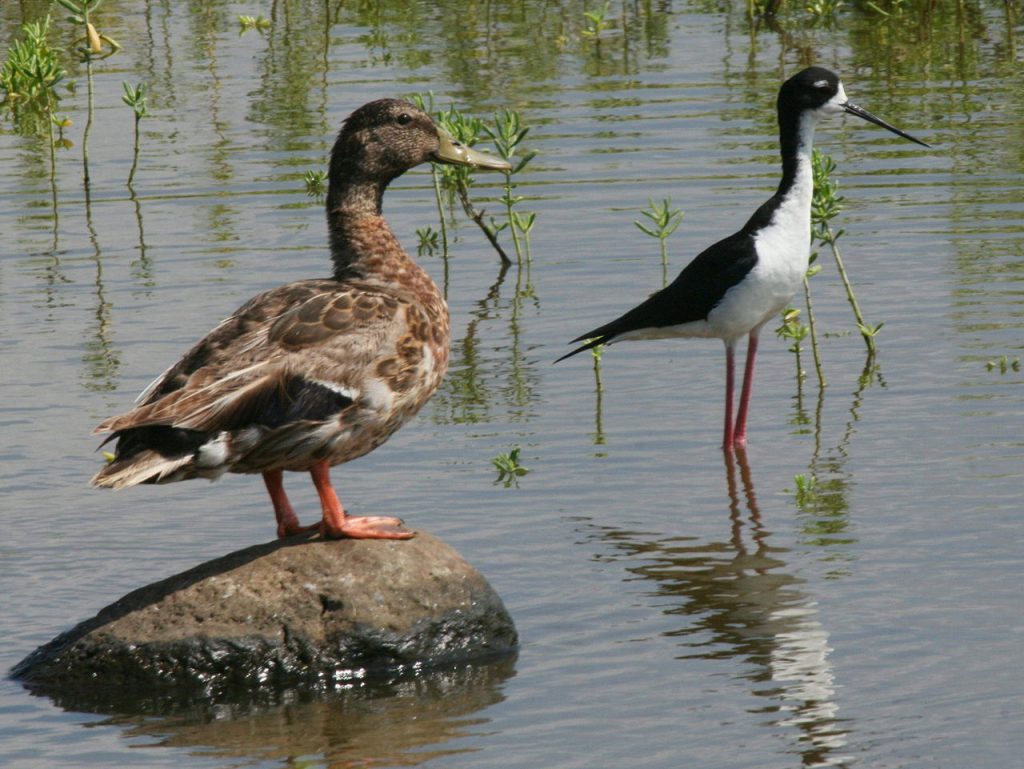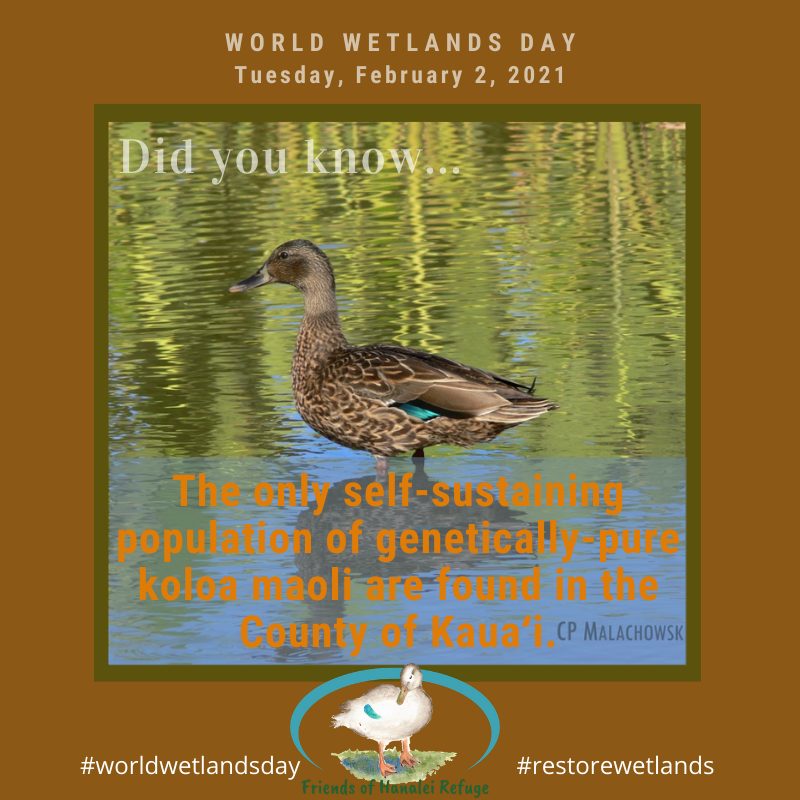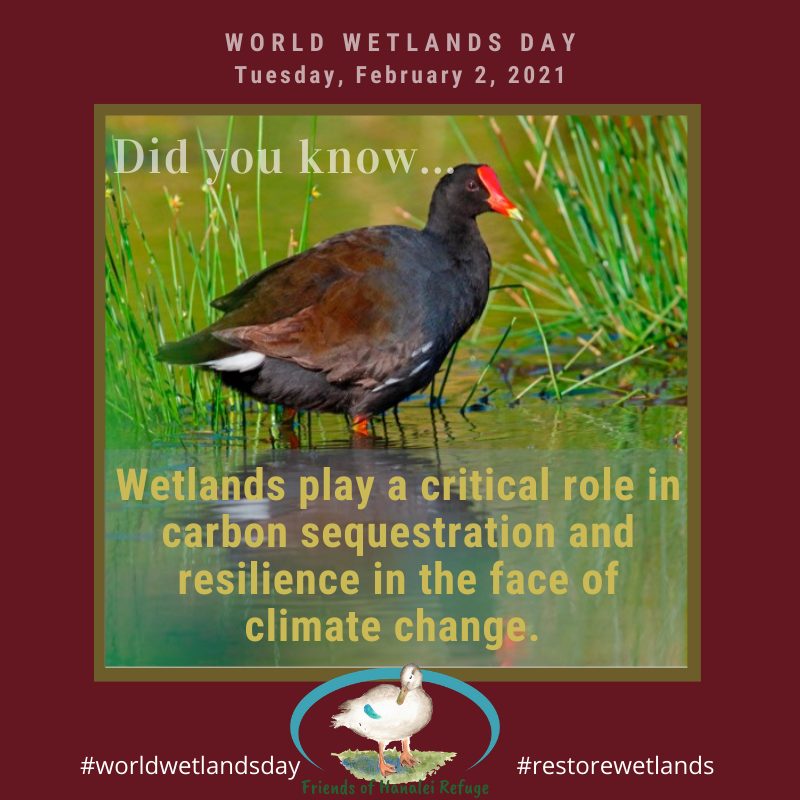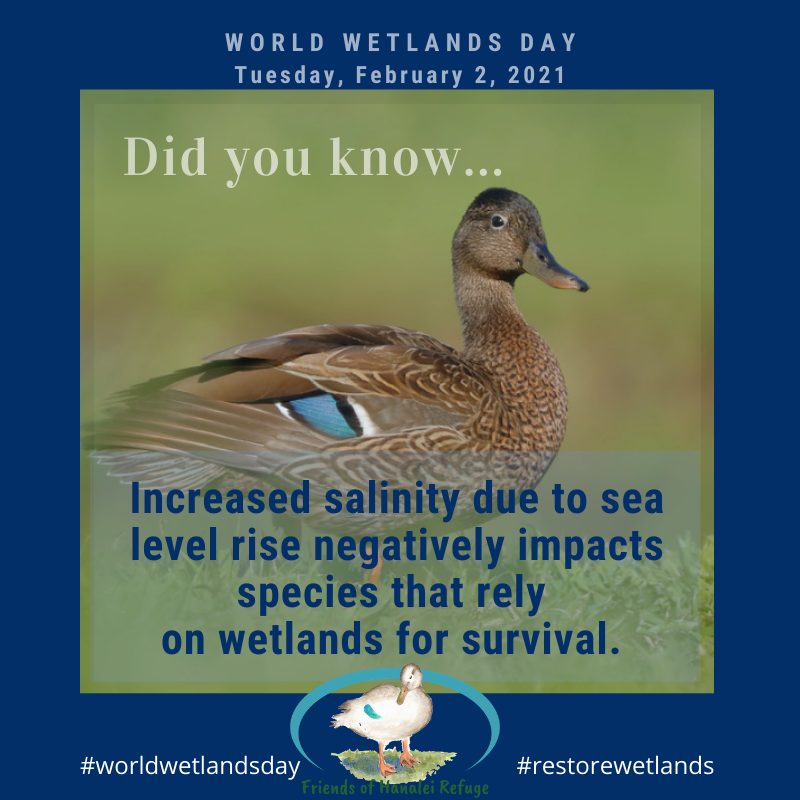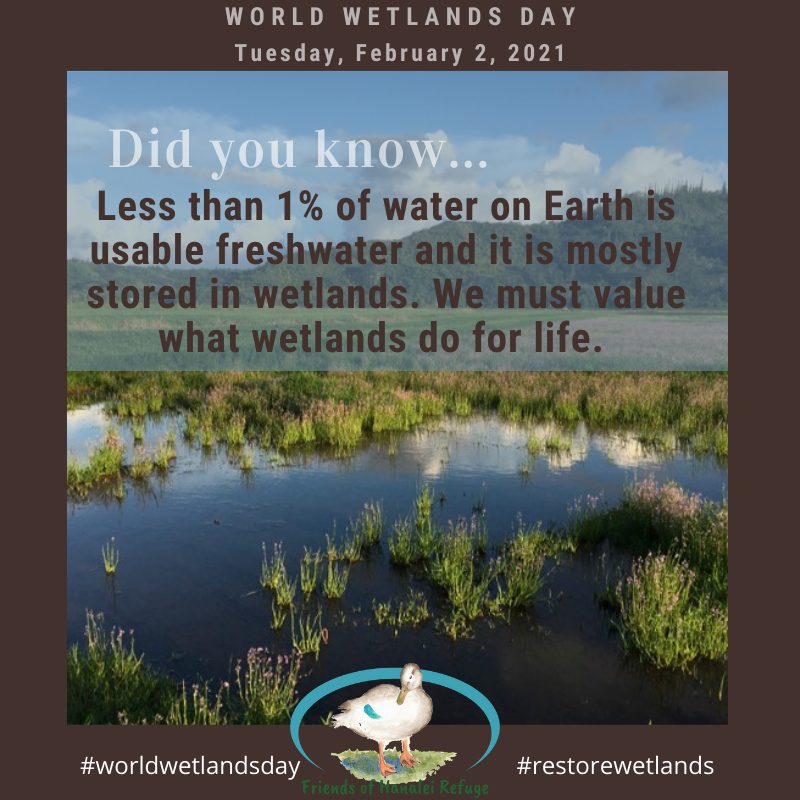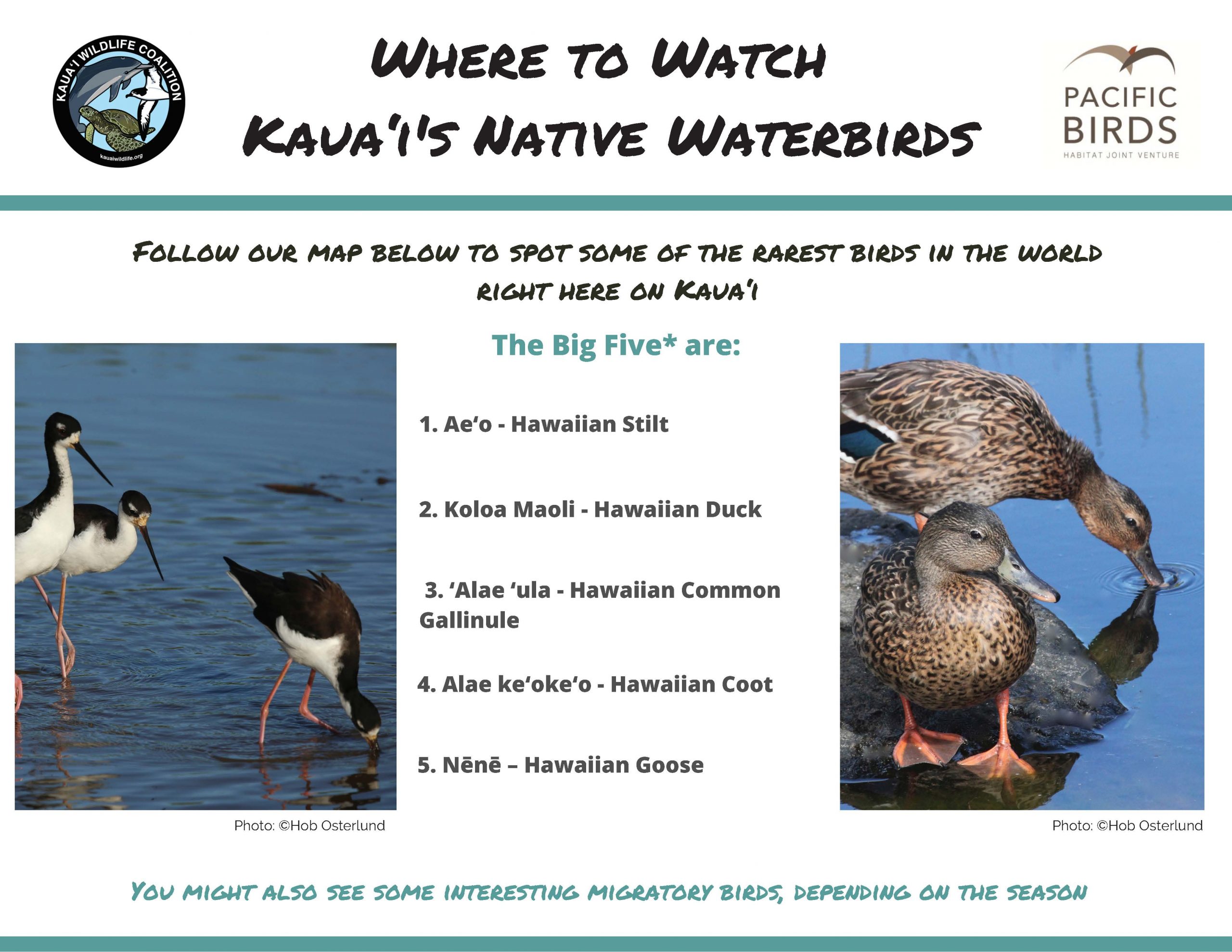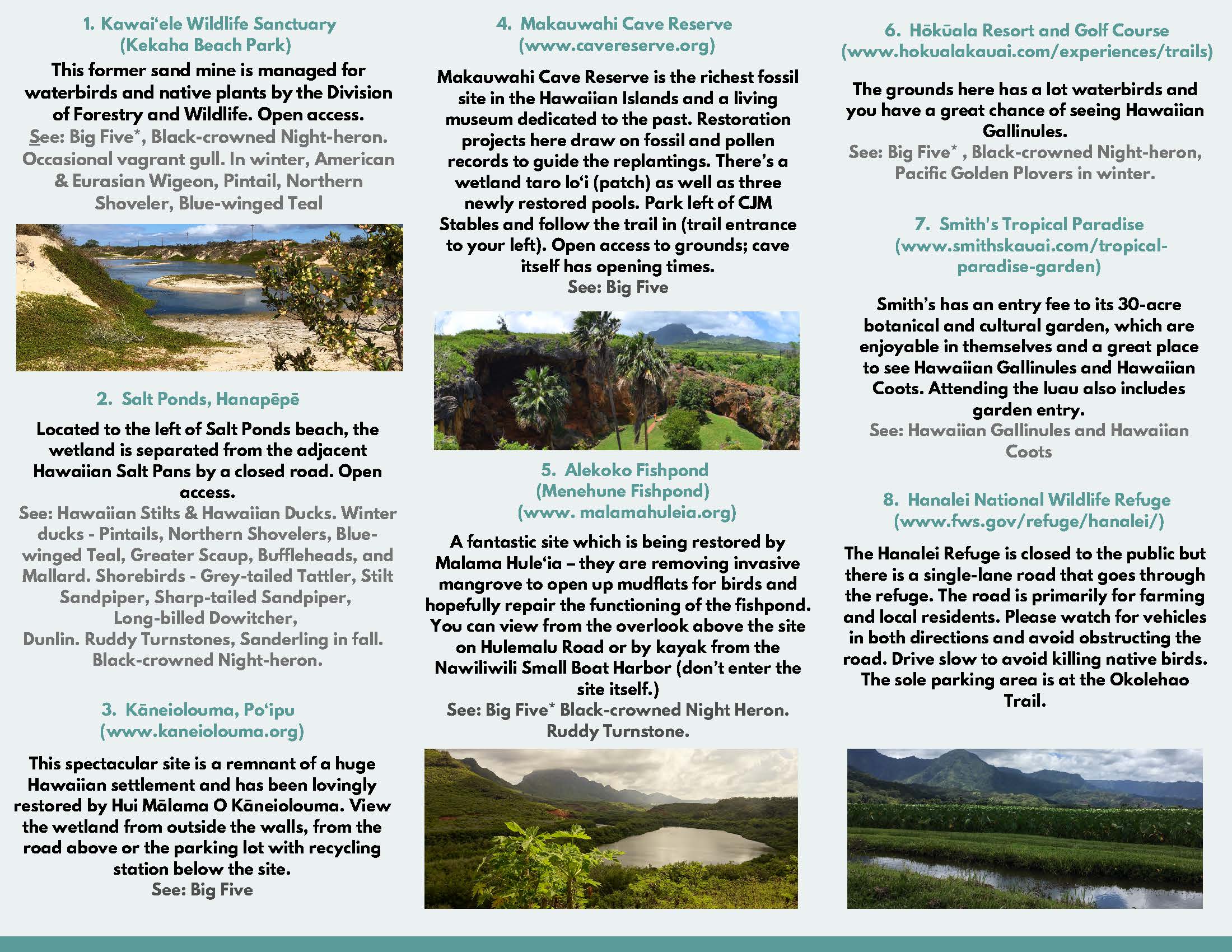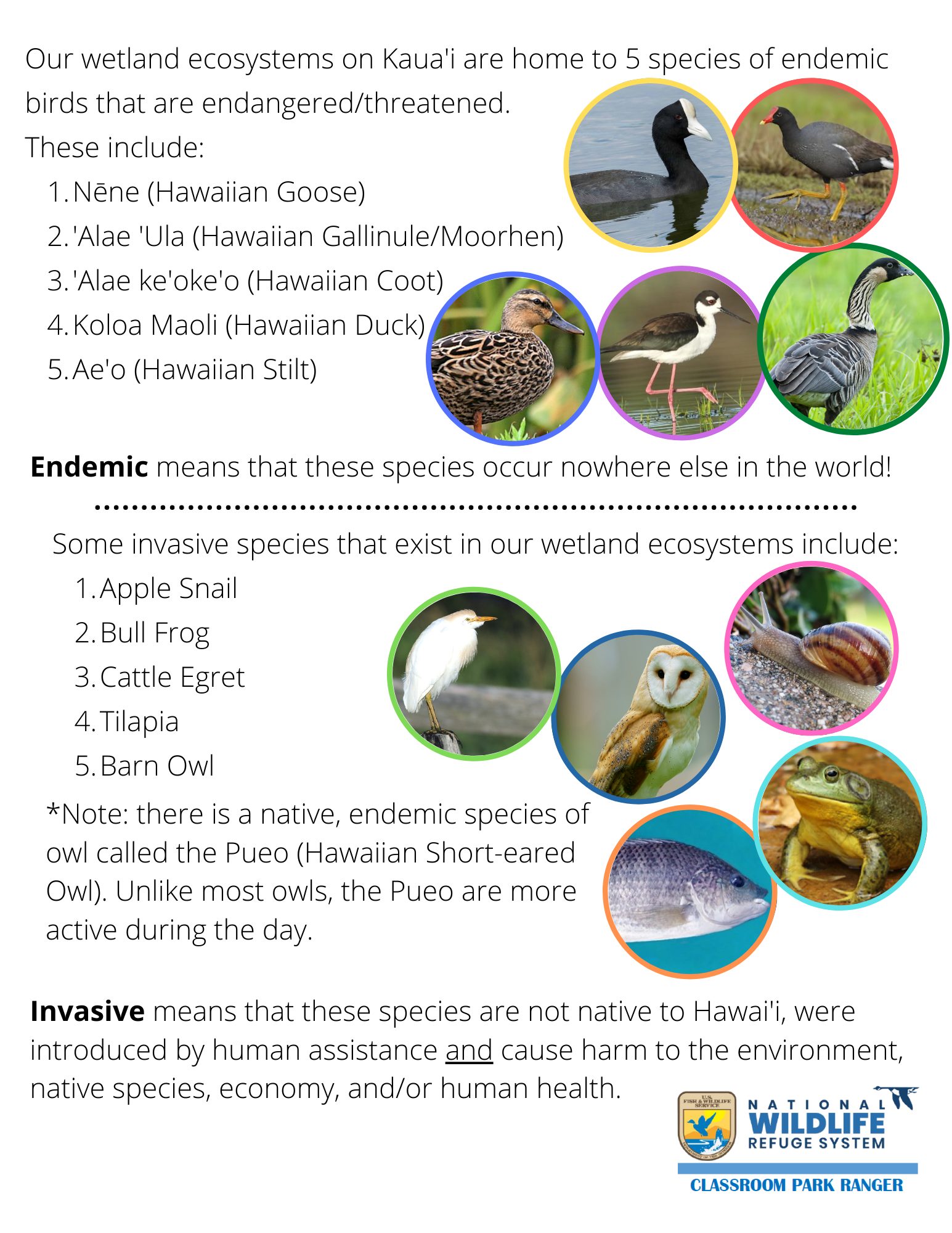Koloa Maoli or Hawaiian Duck
(Anas wyvilliana)
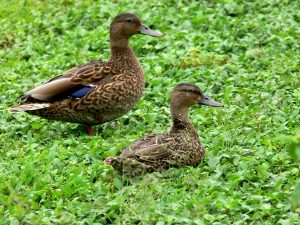
The endangered Koloa Maoli is one of three native Hawaiian waterfowl species. The Koloa Maoli depends on wetlands in both low and high elevations for its survival, and is rarely seen in brackish or saline wetland areas. The wetlands provide safety from predators, as well as access to food sources such as algae, submerged plants or grasses and other vegetation. Koloa Maoli nests are also found along the edges of wetland areas or in upland areas. In addition to the threat of habitat loss, predation, and overhunting, the Koloa Maoli also faces the threat of cross-breeding, also referred to as hybridization, primarily with the feral domestic mallard.
Scroll below to find more information and resources about our beloved bird.
HIGHLIGHT: WORLDWIDE WETLANDS DAY
February 2, 2021
The Koloa Maoli, through its wetland habitat that absorbs carbon, and provides resilience to storm surges, also behaves as an indicator of salt water intrusion. The state’s Climate Change Mitigation and Adaptation Commission and its partners created a Hawaiʻi-relevant mascot, Koloa iki, to inform about sea level rise impacts, and where we can expect to see flooding—on the coasts, and inland; not just on rainy days, but even on sunny days. Koloa shows us where we need to take action to make Hawaiʻi Climate Ready.
Video Credit: Wetlands and Climate Change, Department of Land and Natural Resources
For World Wetlands Day, the Friends of Hanalei Refuge created beautiful, informative graphics that emphasize the importance of wetlands, not just for our beloved birds, but for all of us as well. See them below!
Our Friends at the Pacific Birds Habitat Joint Venture produced the infographic below to highlight Kauaiʻs native water birds, which includes our beloved Koloa Maoli. Check out below where you can find them and what refuges are committed to protect Hawaiiʻs birds!
Folks at the Kilauea Point National Wildlife Refuge created this fun Photo Hunt that highlights Hawaii’s wetlands, as well as native and invasive species found in them!
FOR MORE RESOURCES:
[PDF] National Wildlife Refuge System: Native and Invasives Wetland Photo Hunt
[PDF] Department of Land and Natural Resources: A Teacher’s Guide to Hawaiian Birds
[PDF] A Product of Mālama Hawaiʻi: Koloa Maoli – General Background Information for Teachers
[PDF] A Product of Mālama Hawaiʻi: Duckie Diet – What does the Koloa Maoli Eat? (Grade K-1)
[PDF] SUPPLEMENTARY: Duckie Diet Worksheet (Grade K-1)
[PDF] A Product of Mālama Hawaiʻi: Holoholo Koloa Maoli – Going on a Walk with a Hawaiian Duck (Grades 2-3)
[PDF] SUPPLEMENTARY: Holoholo Koloa Maoli Worksheet (Grade 2-3)
[PDF] A Product of Mālama Hawaiʻi: Wetlands = Home for Koloa Iki (Grades 4-5)
[PDF] A Product of Mālama Hawaiʻi: Going Mauka to Makai (Grade 6)
[PDF] A Product of Mālama Hawaiʻi: Koloa, Mallard, or Both – Which is it? (Grade 7)
[PDF] SUPPLEMENTARY: Koloa or Mallard Worksheet (Grade 7)
[PDF] Department of Land and Natural Resources: Water Birds – Koala Maoli or Hawaiian Duck
[PDF] Department of Land and Natural Resources: USGS – Hawaiian Duck’s Future Threatened by Feral Mallards
[LINK] Department of Land and Natural Resources: Wildlife Programs – About Koloa Maoli
[LINK] Honolulu Zoo Society: About the Koloa Maoli
[PDF] Pacific Rim Conservation: Hawaiian Bird Conservation Action Plan for Koloa Maoli
ARTICLES
Malachowski, C. (2020). Movement Ecology and Population Dynamics of the Endangered Hawaiian Duck (Anas wyvilliana). : Oregon State University.
Malachowski, Christopher & Dugger, Bruce & Uyehara, Kimberly. (2019). Seasonality of Life History Events and Behavior Patterns in the Island Endemic Hawaiian Duck (Anas wyvilliana). Waterbirds. 42. 78-89. 10.1675/063.042.0109.
Malachowski, Christopher & Dugger, Bruce. (2018). Hawaiian duck behavioral patterns in seasonal wetlands and cultivated taro. The Journal of Wildlife Management. 82. 10.1002/jwmg.21429.
Malachowski, C.P., Dugger, B., Uyehara, K.J., & Reynolds, M. (2018). Nesting ecology of the Hawaiian Duck Anas wyvilliana on northern Kaua‘i, Hawai‘i, USA. Wildfowl. 68. 123-139.
Malachowski, C. (2013). Hawaiian duck (Anas wyvilliana) behavior and response to wetland habitat management at Hanalei National Wildlife Refuge on Kaua’i. : Oregon State University.
Underwood, G., Silbernagle, M., Nishimoto, M., & Uyehara, K. (2013). Managing Conservation Reliant Species: Hawaiiʻs Endangered Endemic Waterbirds. PLoS ONE. 8(6): e67872.
Wells, C. P., Lavretsky, P., Sorenson, M. D., Peters, J. L., DaCosta, J. M., Turnbull, S., Uyehara, K. J., Malachowski, C. P., Dugger, B. D., Eadie, J. M., & Engilis, A., Jr (2019). Persistence of an endangered native duck, feral mallards, and multiple hybrid swarms across the main Hawaiian Islands. Molecular ecology. 28(24), 5203–5216. doi.org/10.1111/mec.15286
REPORTS
[PDF] A Health Survey for Hawaiian Duck (Anas wyvilliana) at Hanalei National Wildlife Refuge, Kaua‘i (2016)
